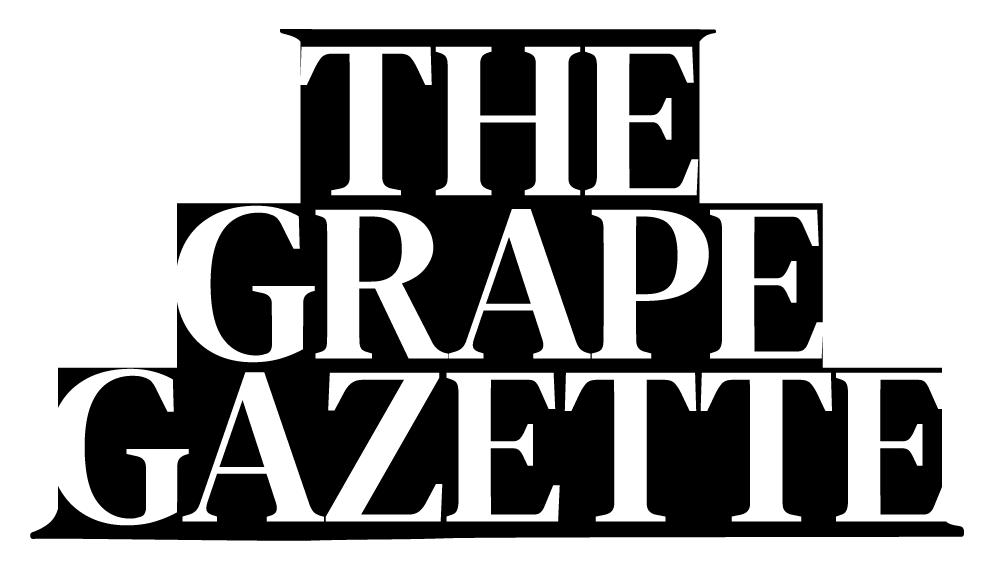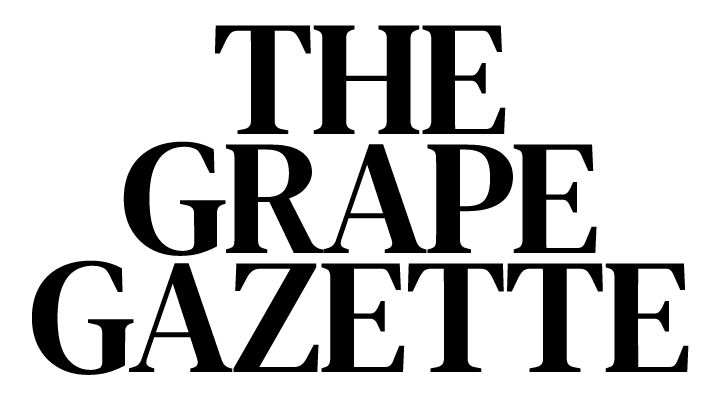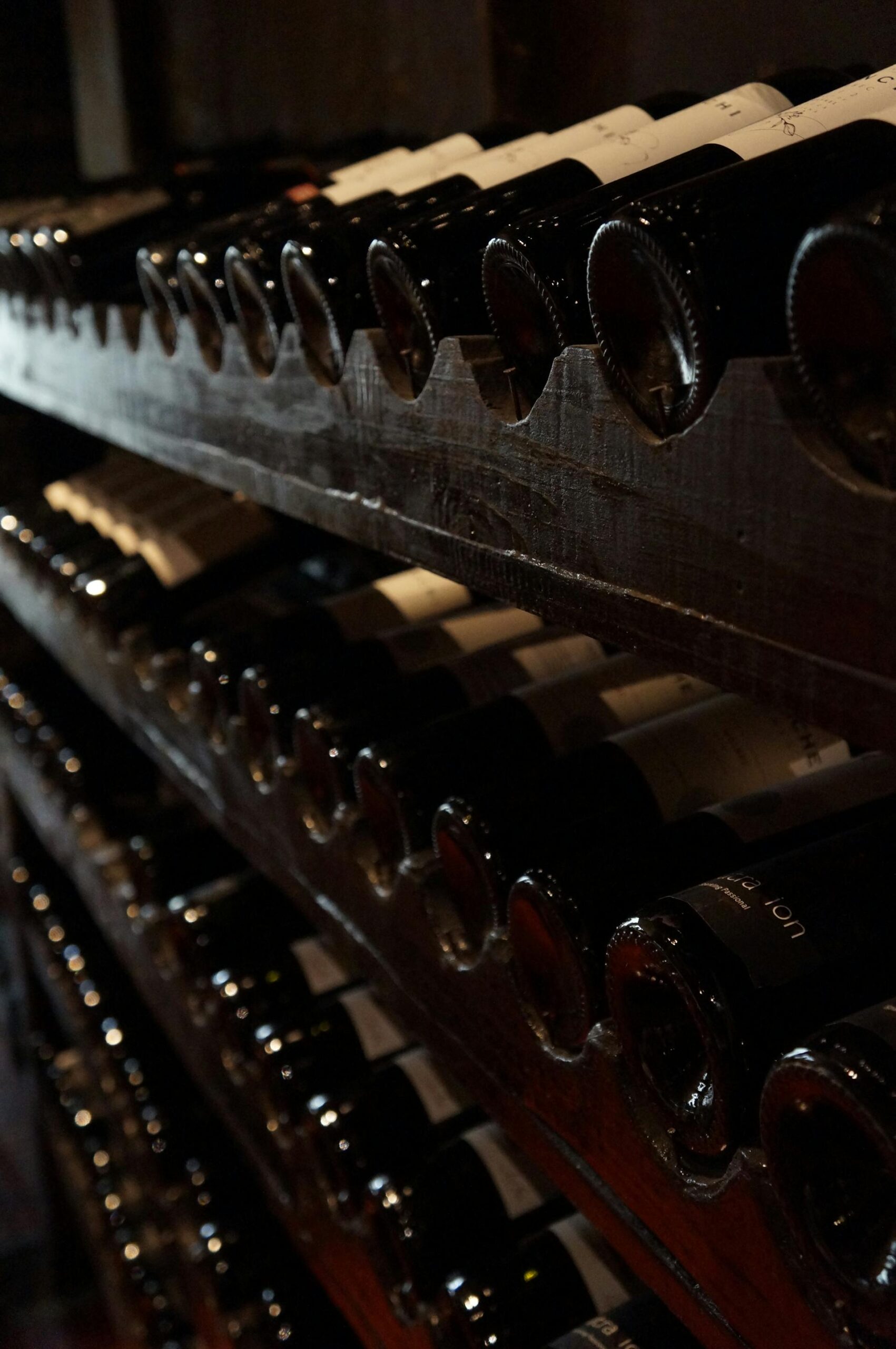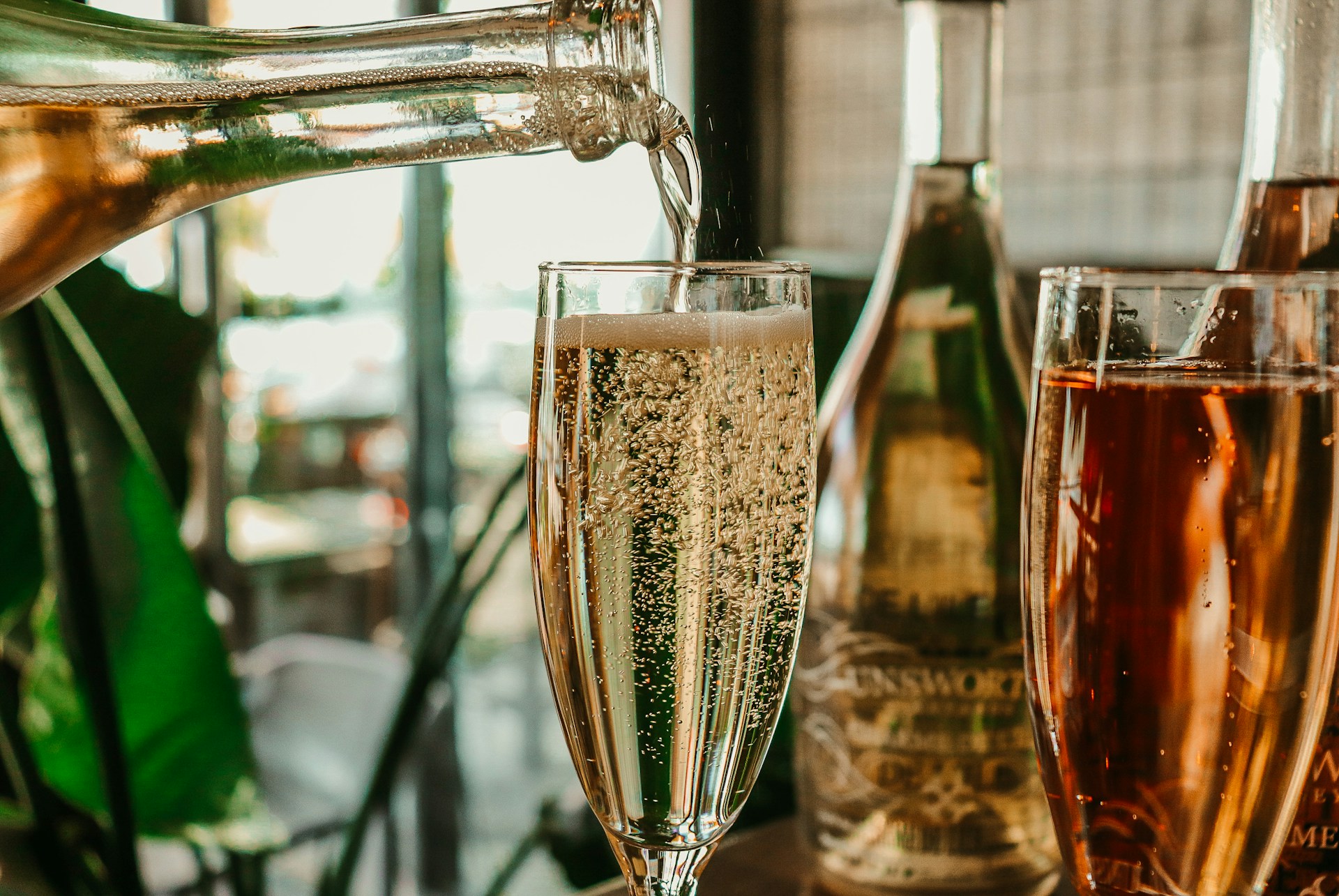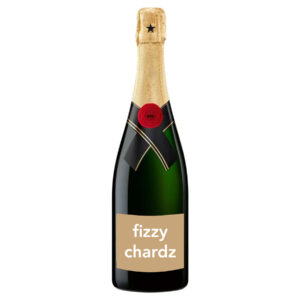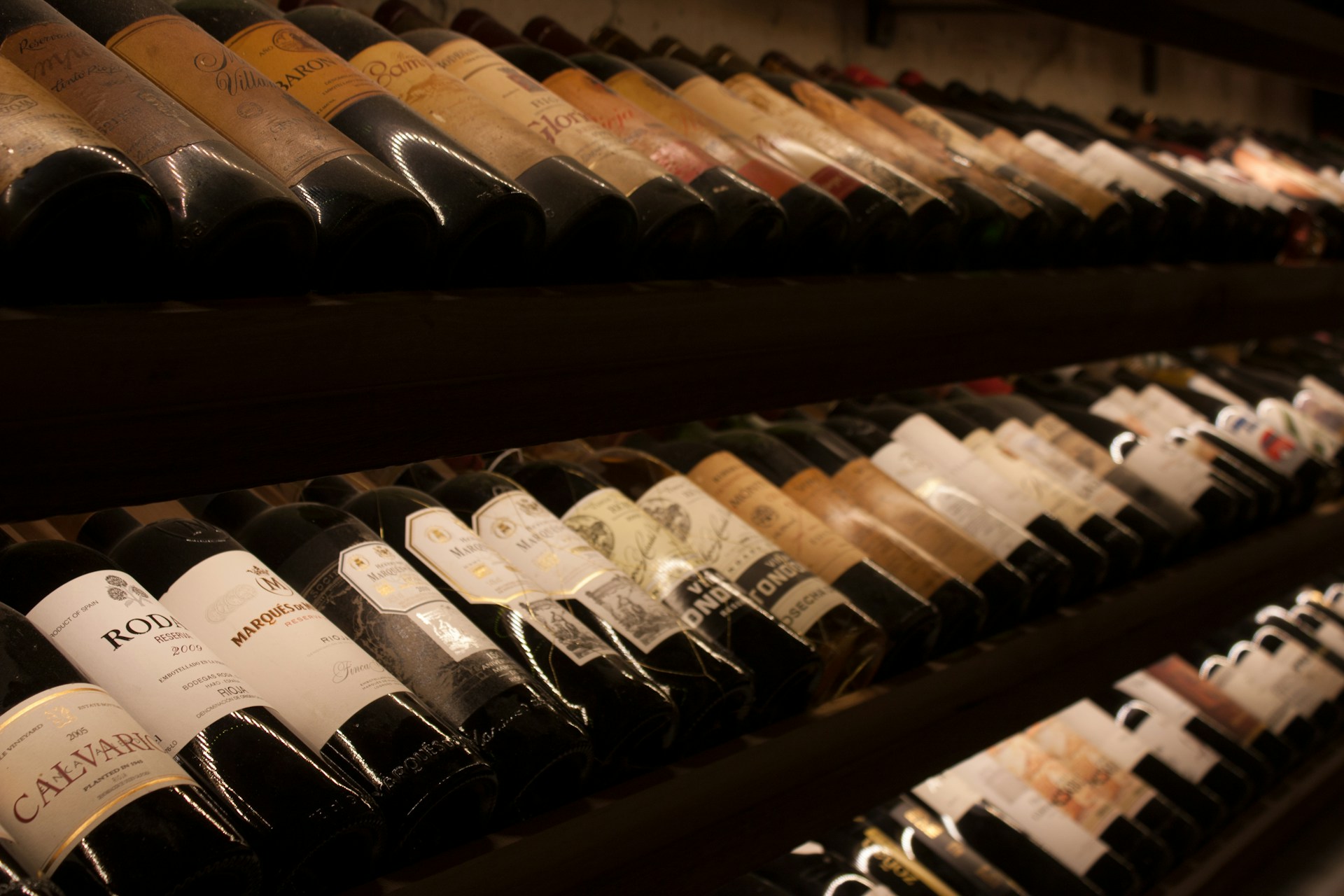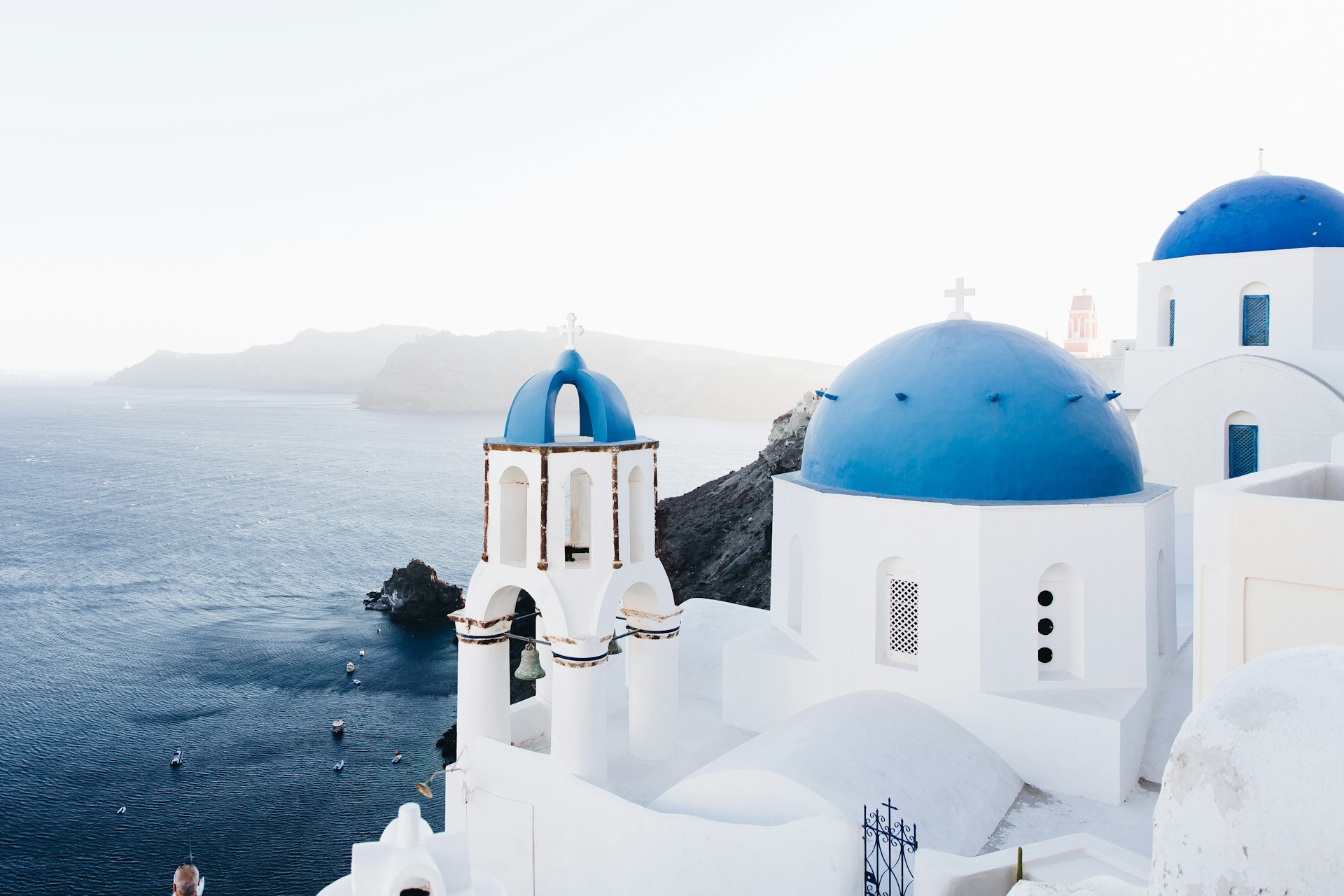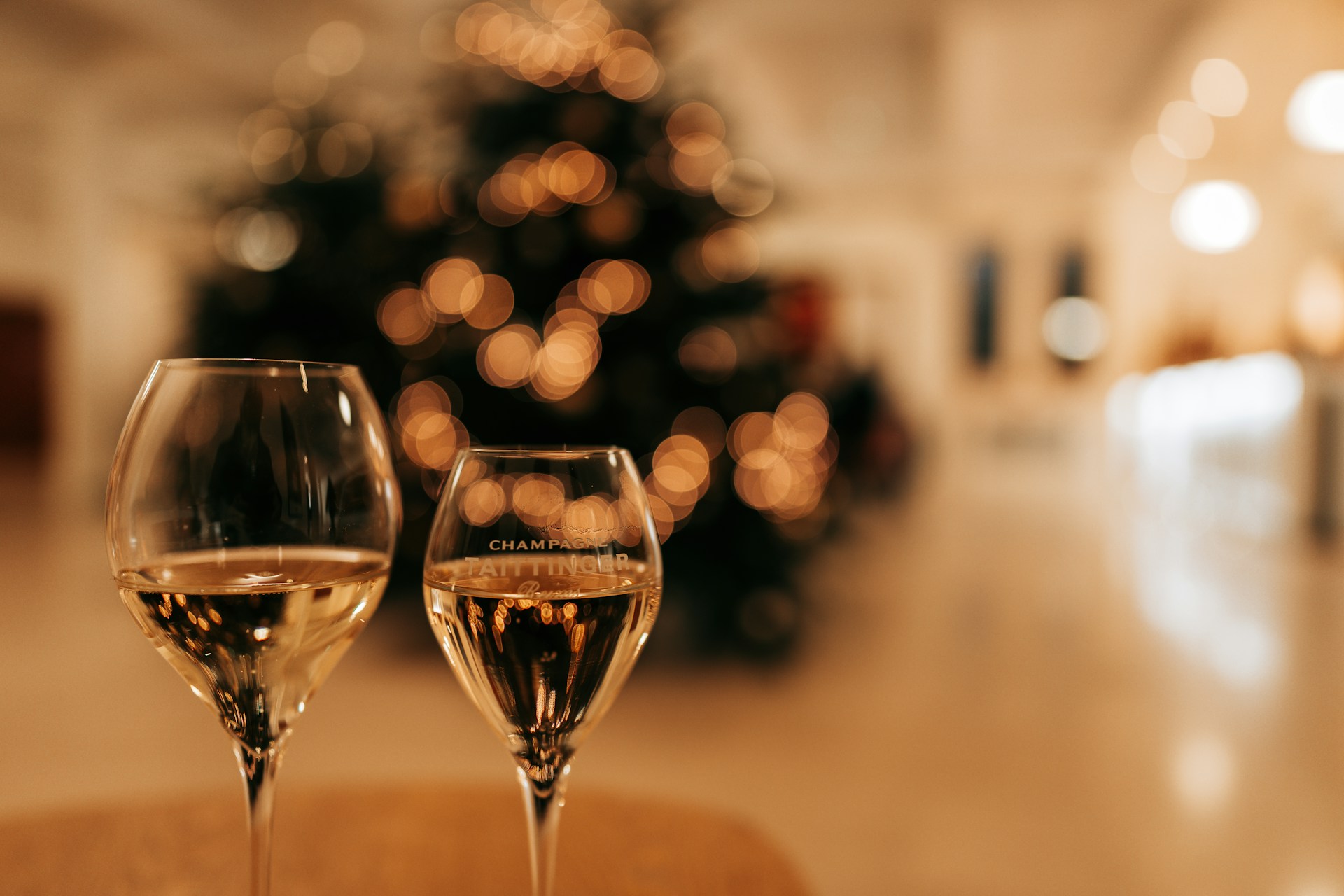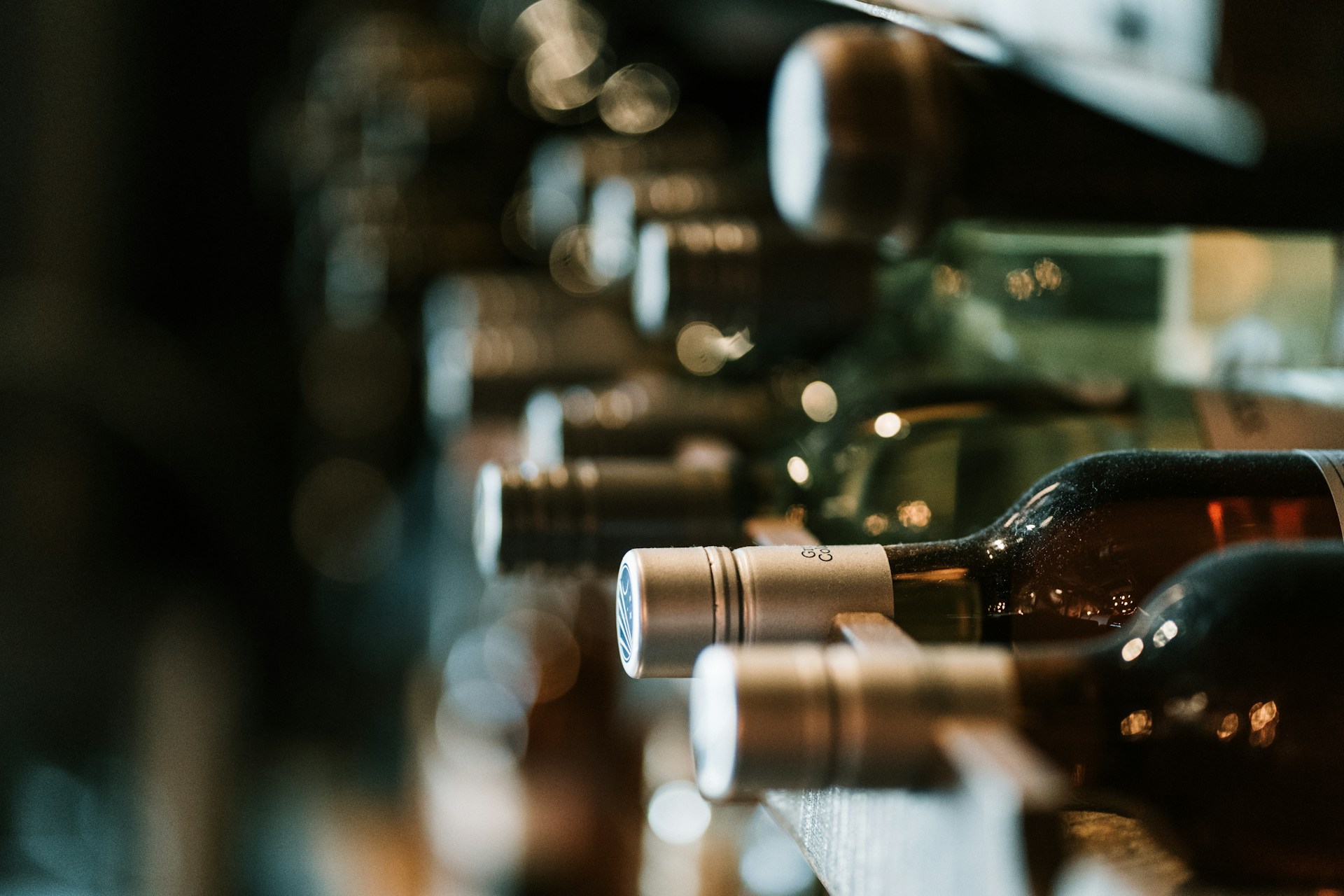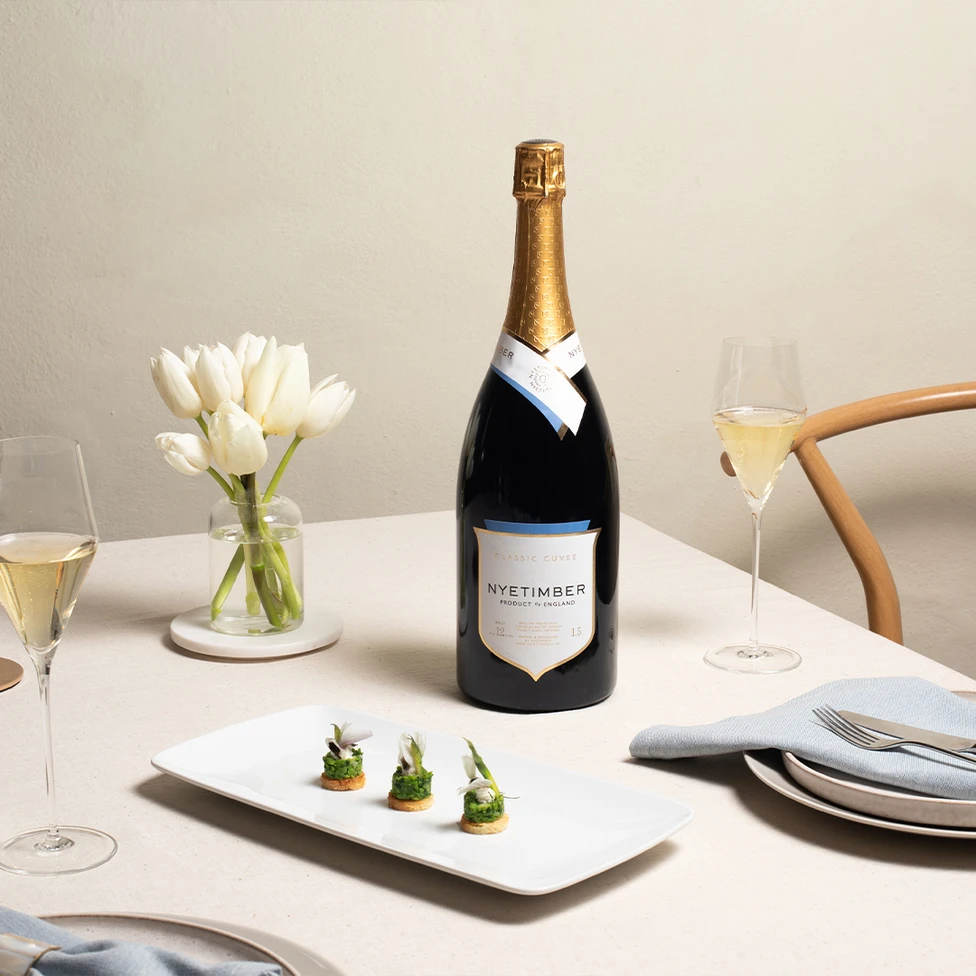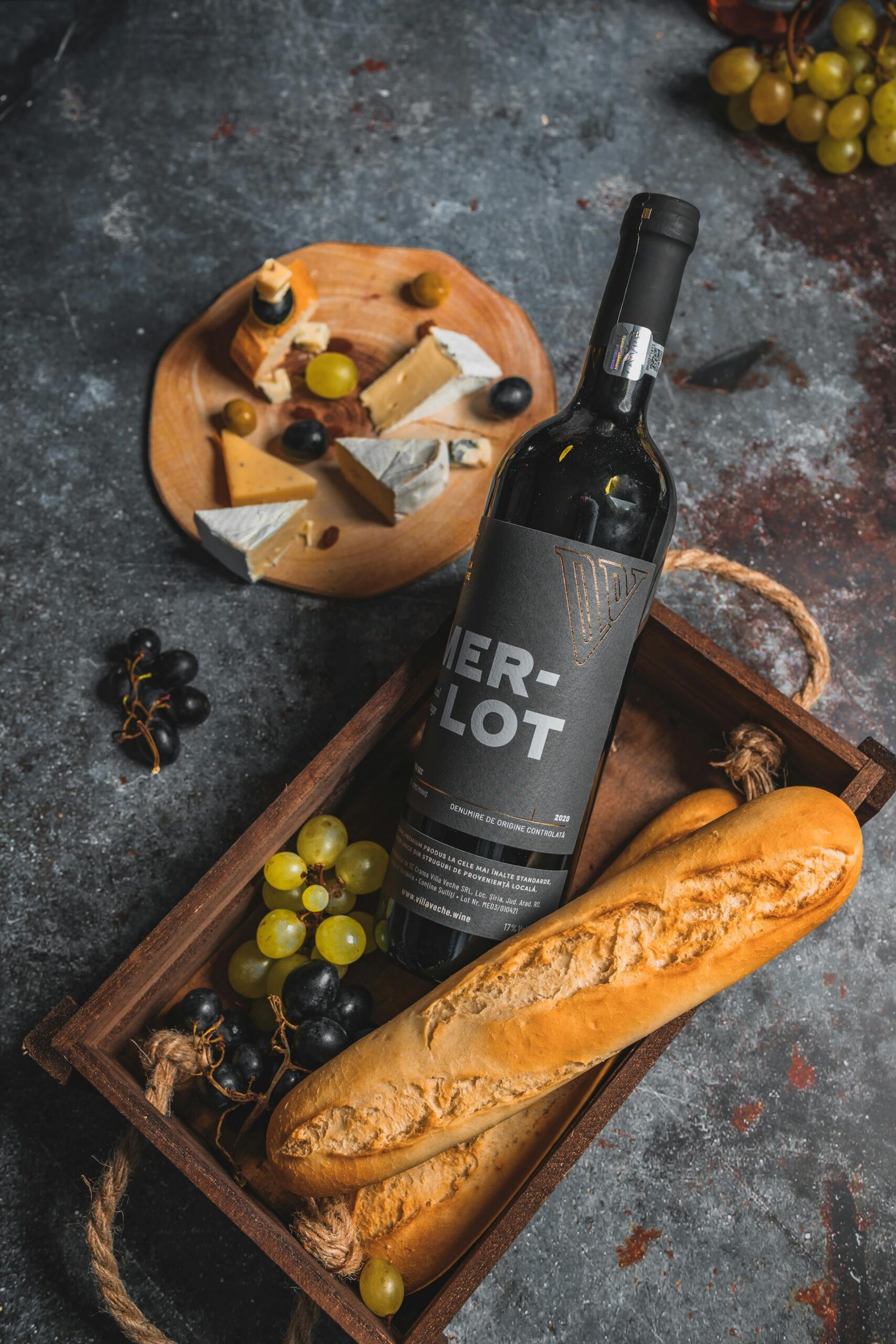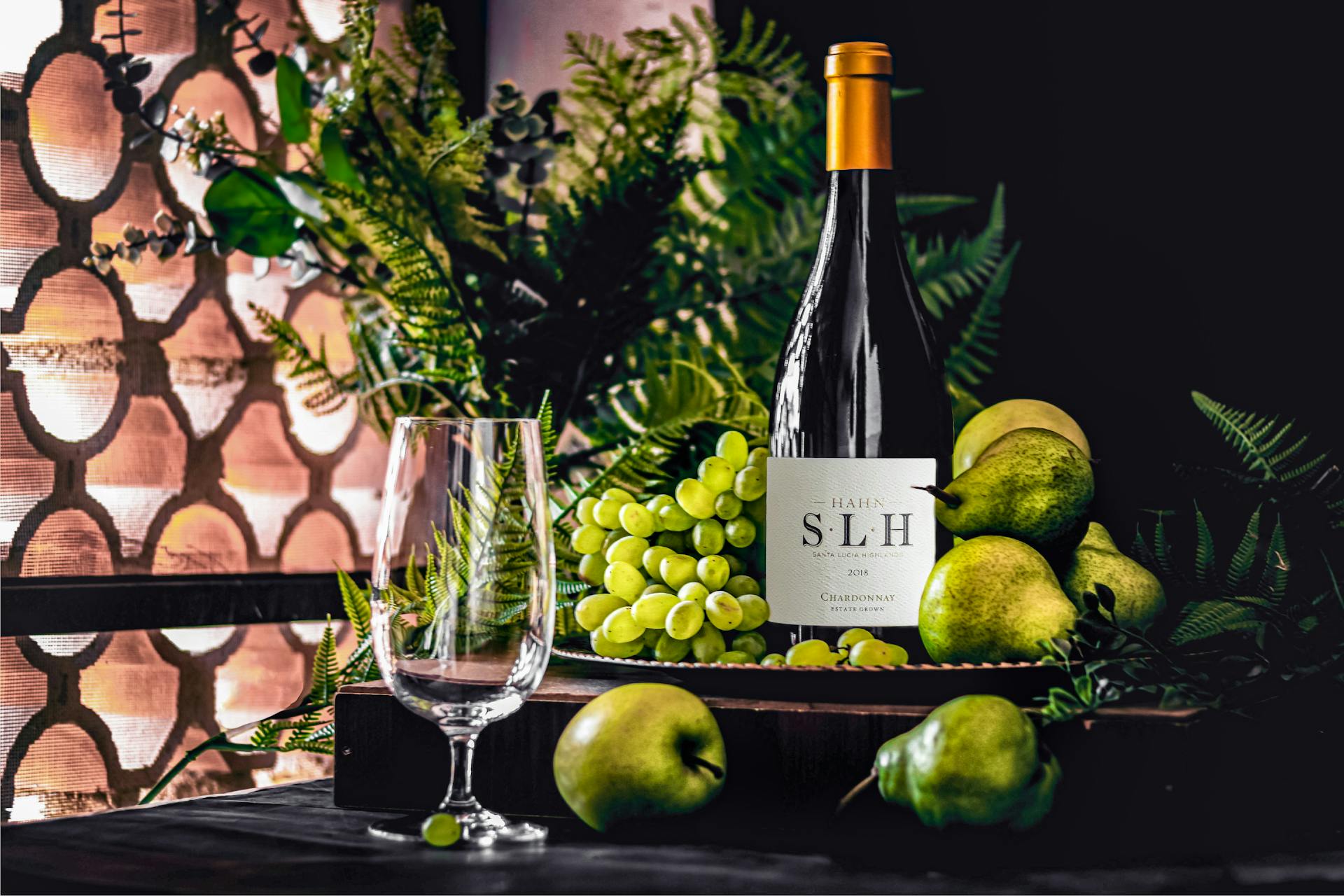Wine Investment: A Guide to Building a Valuable Collection
Wine is more than just a delightful beverage to enjoy with friends and family; it can also be a smart investment. Over the past few decades, wine has emerged as a viable asset class, attracting investors seeking diversification and potential financial returns. However, like any investment, wine comes with its own set of risks and rewards. In this blog, we'll explore the potential benefits and risks of investing in wine, and provide some practical tips for building a wine collection for investment purposes.
The Potential Benefits of Investing in Wine
- Appreciation in Value: One of the primary benefits of investing in wine is the potential for appreciation in value over time. Fine wines, particularly those from renowned regions and vintages, can increase in value significantly as they age. This is due to the limited supply of high-quality wines and the growing demand from collectors and enthusiasts around the world.
- Diversification: Investing in wine can provide diversification to a traditional investment portfolio. Wine is considered a tangible asset, meaning it can offer a hedge against inflation and market volatility. This can help balance the risks associated with stocks, bonds, and other financial instruments.
- Tax Advantages: In some countries, wine investments can offer tax advantages. For example, in the UK, wine is considered a "wasting asset" and is generally exempt from capital gains tax. It's important to consult with a financial advisor or tax professional to understand the specific tax implications in your region.
- Personal Enjoyment: Unlike many other investments, wine can be enjoyed personally. If your investment doesn't appreciate as expected, you still have the option to enjoy a fine bottle of wine. This dual benefit of financial potential and personal pleasure makes wine a unique and appealing investment.
The Risks of Investing in Wine
- Market Volatility: Like any investment, the value of wine can fluctuate based on market conditions. Factors such as economic downturns, changes in consumer preferences, and shifts in global demand can impact the value of wine investments.
- Storage and Preservation: Proper storage is crucial for maintaining the quality and value of wine. Wine must be stored in optimal conditions, including the right temperature, humidity, and light exposure. This can require a significant investment in a wine cellar or professional storage facility.
- Fraud and Counterfeiting: The wine market is not immune to fraud and counterfeiting. Investors must be diligent in verifying the authenticity of their wine purchases and work with reputable dealers and auction houses to mitigate the risk of buying counterfeit bottles.
- Liquidity: Wine is not as liquid as other financial assets. It can take time to find a buyer and complete a sale, particularly for high-value or rare bottles. Investors should be prepared for the possibility of holding their wine investments for an extended period.
Tips for Building a Wine Collection for Investment
- Research and Education: Before diving into wine investments, take the time to educate yourself about the wine market. Learn about different wine regions, grape varieties, vintages, and producers. Understanding the factors that influence wine quality and value will help you make informed investment decisions.
- Focus on Quality: Invest in high-quality wines from reputable producers and regions. Bordeaux, Burgundy, and Napa Valley are known for producing some of the most valuable and sought-after wines in the world. Look for wines with a proven track record of appreciation and demand.
- Buy from Reputable Sources: Purchase wine from reputable dealers, auction houses, and wineries. Ensure that the provenance and storage conditions of the wine are well-documented. Working with trusted sources can help mitigate the risk of fraud and ensure the authenticity of your investment.
- Diversify Your Collection: Just like with any investment portfolio, diversification is key. Build a collection that includes wines from different regions, producers, and vintages. This can help spread the risk and increase the potential for overall returns.
- Consider Professional Storage: Proper storage is essential for preserving the quality and value of your wine. Consider investing in a professional storage facility that offers optimal conditions and security. This can provide peace of mind and protect your investment over the long term.
- Monitor the Market: Stay informed about market trends and developments in the wine industry. Subscribe to wine publications, attend industry events, and engage with other collectors and investors. Keeping a finger on the pulse of the market can help you make timely and strategic investment decisions.
- Consult with Experts: Seek advice from wine investment experts, sommeliers, and financial advisors who have experience in the wine market. Their insights and guidance can be invaluable in building a successful wine investment portfolio.
Investing in wine can be a rewarding and enjoyable endeavor, offering the potential for financial returns and personal satisfaction. By understanding the benefits and risks, and following these practical tips, you can build a valuable wine collection that stands the test of time. Cheers to your wine investment journey!
The Hidden Hero of Champagne
The British have long held a peculiar stance when it comes to their wine preferences. There’s an unspoken rule among many wine aficionados in the UK that can be summed up in three simple words: "Anything but Chardonnay." This aversion to Chardonnay, however, stands in stark contrast to our love for Champagne, the sparkling elixir of celebrations and special occasions. Yet, what many may not realize is that one of Champagne’s primary grapes is none other than the much-maligned Chardonnay. So, what if we revealed this "secret" to the unsuspecting masses? How might perceptions change if Champagne were rebranded as sparkling Chardonnay? Let’s explore this intriguing dichotomy with a bit of tongue-in-cheek humor.
The Chardonnay Conundrum
Chardonnay has a reputation problem, particularly in the UK. The “Anything but Chardonnay” (ABC) movement likely stems from the late 20th century when the market was flooded with overly oaked, mass-produced Chardonnays that left a bad taste in everyone’s mouth—literally and figuratively. The heavy, buttery Chardonnays of the past were a far cry from the elegant, versatile grape that Chardonnay truly is. Yet, despite this widespread aversion, Brits continue to pop bottles of Champagne without a second thought.
Champagne: The Disguised Delight
For the uninitiated, Champagne is not a grape variety but a sparkling wine that hails from the Champagne region of France. The region’s strict regulations and unique terroir give Champagne its distinct character. The primary grape varieties used in Champagne are Chardonnay, Pinot Noir, and Pinot Meunier. While Pinot Noir and Pinot Meunier bring body and fruitiness to the blend, Chardonnay is often credited with providing finesse, elegance, and longevity.
Imagine, for a moment, a world where Champagne was rebranded as "sparkling Chardonnay." Picture the labels proudly proclaiming, "Made with 100% Chardonnay grapes." Would this revelation cause a seismic shift in how Champagne is perceived and enjoyed in the UK? Would the Champagne flutes be put down in horror, or would there be a collective shrug of indifference as the bubbles continued to flow?
The Power of Perception
Perception plays a significant role in our preferences and biases. The disdain for Chardonnay often comes from a place of misunderstanding or a single bad experience that taints the reputation of an entire grape variety. In reality, Chardonnay is one of the most versatile grapes, capable of producing a wide range of wine styles from crisp, mineral-driven Chablis to rich, buttery California Chardonnays. And of course, it is a cornerstone of the world’s most prestigious sparkling wine.
If we were to reveal the true identity of Chardonnay in Champagne, it might force people to re-evaluate their prejudices. The sophisticated allure of Champagne, coupled with the celebratory occasions it’s associated with, might just be the perfect disguise to rehabilitate Chardonnay’s image.
A Hypothetical Rebranding: Sparkling Chardonnay
Let’s indulge in a bit of speculative fun. Imagine walking into a high-end wine shop and seeing rows of bottles labeled "Sparkling Chardonnay." The marketing materials boast of the wine’s complexity, its elegant bubbles, and its suitability for any celebration. Would people approach it with the same enthusiasm they reserve for Champagne, or would there be hesitation?
For some, the word “Chardonnay” might trigger flashbacks of those overly oaked wines from the past. But for others, the allure of something new and prestigious could be irresistible. After all, if Champagne producers can sell millions of bottles based on the wine’s reputation and quality, why not Sparkling Chardonnay?
The Celebration Factor
One of the reasons Champagne is so beloved is because of its association with celebrations. From weddings to New Year’s Eve, Champagne is synonymous with joy and festivity. It’s hard to imagine that a simple name change could disrupt such deep-rooted traditions. In fact, rebranding Champagne as Sparkling Chardonnay could add an extra layer of intrigue and conversation at social gatherings.
“Did you know this is made entirely from Chardonnay?” one might say, swirling their glass with a knowing smile. “It’s amazing how versatile this grape is,” another might chime in, taking a sip. The conversation could then turn to the history of Chardonnay, its different expressions, and how it became one of the most celebrated grapes in the world—thanks, in no small part, to Champagne.
Italy’s Sparkling Strategy: A Prosecco Plot
Now, let’s add a bit of international rivalry to our tale. Imagine the Italians, ever the clever marketeers, seizing this opportunity to give their beloved Prosecco a boost. Prosecco, often seen as Champagne’s more affordable cousin, has enjoyed its own rise in popularity, but it still lingers in the shadow of Champagne’s prestige.
Picture an Italian marketing campaign boldly declaring, “Champagne? It’s just Sparkling Chardonnay!” Billboards in Milan, Rome, and Venice could showcase stylish Italians toasting with flutes of Prosecco, with captions proclaiming, “Why settle for Chardonnay when you can have Glera?”—the grape variety used to make Prosecco.
Wine enthusiasts might then start to question their allegiance. After all, if the choice is between a wine made from a grape they’ve sworn off and a fresh, fruity alternative, Prosecco could suddenly seem even more appealing. The Italians, with their flair for drama and panache, could turn this revelation into a marketing coup, elevating Prosecco’s status and giving Champagne a run for its money.
The Chardonnay Renaissance
If Sparkling Chardonnay were to gain popularity, it could spark a renaissance for Chardonnay itself. People might begin to explore other wines made from this grape, discovering its true potential beyond the oak-laden versions that once dominated the market. The crisp, clean Chardonnays of Chablis, the elegant Blanc de Blancs Champagnes, and even the balanced New World Chardonnays could find a new audience.
Wine bars might start featuring Chardonnay flights, showcasing the grape’s diversity. Sommeliers could craft menus highlighting the best food pairings for Chardonnay-based wines, from fresh seafood to creamy pasta dishes. The possibilities are endless, and all it takes is a shift in perception.
A Toast to Chardonnay
In the end, whether we call it Champagne or Sparkling Chardonnay, the quality of the wine remains unchanged. It’s a testament to the skill of the winemakers and the unique terroir of the Champagne region. What’s in a name, after all? As Shakespeare famously wrote, “That which we call a rose by any other name would smell as sweet.” The same could be said for Champagne.
So, the next time you find yourself at a celebration, raising a glass of bubbly, take a moment to appreciate the Chardonnay behind the magic. And perhaps, with a wink and a nod, you can share the “secret” with those around you. After all, great wine is meant to be enjoyed and celebrated, no matter what name it goes by.
The British aversion to Chardonnay and the simultaneous love for Champagne is a fascinating paradox. By rebranding Champagne as Sparkling Chardonnay, we could challenge preconceived notions and open up a world of possibilities for wine enthusiasts. Whether it leads to a Chardonnay renaissance or simply adds a touch of humour to our celebrations, embracing the true identity of Champagne can only enrich our appreciation of this beloved beverage.
And let's not forget our friends in Italy, who might just seize this opportunity to elevate Prosecco by pointing out Champagne’s hidden Chardonnay identity. This playful rivalry could add a delightful twist to the world of sparkling wines, making our celebrations even more vibrant and varied.
So here’s to Chardonnay, the unsung hero of Champagne. May we continue to enjoy its sparkling delight, and perhaps, learn to love it even more, both in and out of disguise. Cheers!
Wine Ageing: How Wines Evolve with Age
Wine, often referred to as a "living" beverage, undergoes a fascinating transformation as it ages. This evolution depends on a myriad of factors, including grape variety, winemaking techniques, and storage conditions. In this blog, we'll delve into how wines change over time and explore the critical elements that contribute to their ageing potential.
The Science of Wine Ageing
Before diving into specific factors, it’s important to understand the basic science behind wine ageing. When winemakers bottle wine, it contains a complex mix of compounds, including tannins, acids, sugars, and phenolic compounds. Over time, these compounds interact in ways that can enhance the wine’s flavour, aroma, and texture. This process involves oxidation, esterification, and polymerisation:
- Oxidation: Controlled exposure to oxygen can lead to desirable changes, such as the development of complex aromas and flavours. However, too much oxygen spoils the wine.
- Esterification: This process forms esters, which are compounds that contribute to the wine’s fruity and floral aromas.
- Polymerisation: Tannins and phenolic compounds bind together, leading to a smoother texture and a decrease in astringency.
Grape Variety
One of the most significant factors influencing a wine’s ageing potential is the grape variety used in its production. Different grape varieties have varying levels of tannins, acids, and phenolic compounds, which all play a role in how a wine ages.
- Red Wines:
- Cabernet Sauvignon: Known for its high tannin content, Cabernet Sauvignon can age for decades. The tannins soften over time, revealing layers of dark fruit, tobacco, and earth.
- Pinot Noir: With its delicate tannins and high acidity, Pinot Noir can develop complex flavours over a shorter ageing period compared to Cabernet Sauvignon. Look for notes of mushroom, forest floor, and dried fruit.
- Syrah/Shiraz: Depending on the style, Syrah can age gracefully, developing flavours of leather, spice, and dark chocolate.
- White Wines:
- Chardonnay: Age-worthy Chardonnays, especially those from Burgundy, can evolve for many years, showcasing notes of hazelnut, honey, and brioche.
- Riesling: High acidity and sugar content allow Rieslings to age beautifully, developing petrol, honey, and dried apricot characteristics.
- Sémillon: Often blended with Sauvignon Blanc, Sémillon-based wines can develop rich, waxy textures and flavours of marmalade and lanolin.
Winemaking Techniques
The methods used during the winemaking process significantly impact a wine’s ageing potential. Winemakers employ various techniques to enhance the structure and longevity of their wines.
- Fermentation:
- Temperature Control: Fermentation at cooler temperatures preserves delicate aromatics and enhances the wine’s ageing potential.
- Extended Maceration: Allowing the juice to remain in contact with the skins for an extended period increases tannin and phenolic content, aiding in long-term ageing.
- Oak Ageing:
- Barrel Selection: The choice of oak (French vs. American) and the age of the barrels impart different flavours and influence the wine’s structure. New oak barrels add vanilla, spice, and toast, while older barrels allow for subtle micro-oxygenation without overwhelming the wine’s inherent characteristics.
- Ageing Duration: Extended ageing in oak helps stabilise the wine, integrate tannins, and develop complex flavours.
- Malolactic Fermentation: This secondary fermentation process, where malic acid converts to lactic acid, can soften a wine’s acidity and add creamy, buttery notes, particularly in white wines like Chardonnay.
- Lees Contact: Ageing a wine on its lees (dead yeast cells) adds texture and complexity. This technique is commonly used in the production of Champagne and other sparkling wines.
Storage Conditions
Proper storage conditions are crucial for preserving and enhancing a wine’s ageing potential. Even the finest wines deteriorate if not stored correctly.
- Temperature: Store wine at a consistent temperature, ideally between 10-15°C (50-59°F). Fluctuations can cause premature ageing or spoilage.
- Humidity: Maintaining a humidity level of around 70% helps keep corks from drying out, which can allow air to seep into the bottle and oxidise the wine.
- Light: Keep wines away from direct sunlight and strong artificial light, which can degrade the wine’s compounds and lead to undesirable flavours.
- Vibration: Minimising vibrations is important, as they can disturb the sediment in the bottle and negatively impact the wine’s evolution.
- Position: Store bottles horizontally to keep the cork moist, preventing it from shrinking and allowing air to enter.
Notable Examples of Age-Worthy Wines
Certain wines are renowned for their ageing potential and serve as excellent examples of how wines can evolve over time.
- Bordeaux: Top-tier Bordeaux wines, particularly those from the Médoc and Saint-Émilion, can age for decades, developing complex layers of fruit, earth, and spice.
- Barolo: This Italian wine, made from the Nebbiolo grape, boasts robust tannins and high acidity, allowing it to age gracefully for 10-20 years or more.
- Champagne: Vintage Champagnes, especially those from prestigious houses, can age for many years, developing rich, toasty, and nutty flavours.
- Rioja: Spanish Rioja, particularly those labelled as Reserva or Gran Reserva, can age for several decades, showcasing a beautiful evolution of fruit, spice, and leather notes.
The evolution of wine with age is a complex and fascinating journey influenced by grape variety, winemaking techniques, and storage conditions. Understanding these factors can enhance your appreciation of aged wines and guide you in selecting wines with excellent ageing potential. Whether you prefer the bold, structured character of a well-aged Cabernet Sauvignon or the delicate, nuanced flavours of an old Riesling, exploring aged wines offers a unique and rewarding experience for any wine enthusiast.
Remember, not all wines are meant to be aged, and part of the joy of wine is discovering the perfect moment to enjoy it. Cheers to your journey through the world of aged wines!
Celebrity Owned Wines
The world of wine is rich with history, tradition, and innovation. In recent years, it has also become a playground for celebrities seeking to blend their passion for viticulture with their star power. From Hollywood icons to music legends, numerous celebrities have ventured into winemaking, creating unique and high-quality wines that reflect their personal tastes and dedication to the craft. In this blog, we explore some of the most famous celebrity-owned wines and wineries, highlighting their stories and signature offerings.
1. Brad Pitt and Angelina Jolie - Miraval
One of the most renowned celebrity-owned wineries is Château Miraval, co-owned by Hollywood stars Brad Pitt and Angelina Jolie. Located in the Provence region of France, this estate is famous for its exceptional rosé wines. The couple purchased the estate in 2011, and their Miraval Rosé quickly gained international acclaim.
The 2012 vintage of Miraval Rosé was even named one of the top 100 wines of the year by Wine Spectator. The estate itself is stunning, with a rich history dating back to the 13th century and a focus on sustainable farming practices. Additionally, the famous 'chicken wine' everyone is talking about, La Vieille Ferme, is produced by Famille Perrin, the same makers of Miraval. It features a chicken on the bottle and has become incredibly popular this summer as a go-to alternative to wines like Whispering Angel.
Learn more about Miraval here.
2. Francis Ford Coppola - Coppola Winery
Legendary filmmaker Francis Ford Coppola, known for classics like "The Godfather" series, has also made a name for himself in the wine industry. His Coppola Winery, located in Sonoma County, California, combines his passion for storytelling and winemaking. The winery produces a wide range of wines, from affordable everyday bottles to high-end reserves.
Coppola's winery is designed to be a destination, offering wine tasting, dining, and even a movie gallery. The Diamond Collection, Director's Cut, and Sofia sparkling wines are some of their popular lines.
Explore Coppola Winery here.
3. Sting and Trudie Styler - Il Palagio
British musician Sting and his wife Trudie Styler own Il Palagio, a picturesque estate in Tuscany, Italy. The couple has transformed this 16th-century villa into a thriving winery and organic farm. Il Palagio produces a variety of wines, including their well-known "Sister Moon," "Message in a Bottle," and "When We Dance."
The estate is not only a wine producer but also a retreat for the couple and their guests, offering a serene environment for both relaxation and creativity.
Discover Il Palagio here.
4. Drew Barrymore - Barrymore Wines
Actress Drew Barrymore has extended her artistic talents to the world of wine with Barrymore Wines. Produced in collaboration with Carmel Road Winery in Monterey, California, Barrymore Wines focuses on creating approachable and food-friendly wines. The portfolio includes a Pinot Grigio, Rosé, and a Pinot Noir.
Barrymore's passion for wine and food shines through in her brand, which emphasizes the joy of sharing good wine with friends and family.
Visit Barrymore Wines here.
5. Sam Neill - Two Paddocks
New Zealand actor Sam Neill, best known for his role in "Jurassic Park," owns Two Paddocks, a boutique winery in Central Otago, New Zealand. Neill started the winery in 1993 with the goal of producing world-class Pinot Noir. Two Paddocks has since expanded to include Riesling and other varietals.
Neill's commitment to quality and sustainable practices has earned Two Paddocks a reputation for excellence in the wine community.
Explore Two Paddocks here.
6. Madonna - Ciccone Vineyard and Winery
Pop icon Madonna's father, Tony Ciccone, owns Ciccone Vineyard and Winery in Michigan. While Madonna herself is not directly involved in the winemaking process, her family's name brings attention to the winery. The vineyard produces a variety of wines, including Pinot Grigio, Cabernet Franc, and Riesling.
Located in the Leelanau Peninsula, Ciccone Vineyard and Winery offers beautiful views and a welcoming atmosphere for visitors.
Learn more about Ciccone Vineyard here.
7. Yao Ming - Yao Family Wines
Former NBA star Yao Ming has made a significant impact on the wine industry with Yao Family Wines in Napa Valley, California. Founded in 2011, the winery specializes in producing premium Cabernet Sauvignon. Yao Family Wines reflect Ming's dedication to quality and his appreciation for the art of winemaking.
The wines have received high ratings and praise from critics, establishing Yao Family Wines as a notable player in the Napa Valley wine scene.
Discover Yao Family Wines here.
8. Kyle MacLachlan - Pursued by Bear
Actor Kyle MacLachlan, known for his roles in "Twin Peaks" and "Sex and the City," owns Pursued by Bear winery in Walla Walla, Washington. The winery's name is inspired by a stage direction from Shakespeare's play "The Winter's Tale." Pursued by Bear focuses on producing high-quality Syrah, Cabernet Sauvignon, and a red blend called "Baby Bear."
MacLachlan's hands-on approach to winemaking and his collaboration with top-notch winemakers have resulted in wines that are both critically acclaimed and beloved by wine enthusiasts.
Visit Pursued by Bear here.
9. Fergie - Ferguson Crest
Singer Fergie and her father Pat Ferguson co-own Ferguson Crest, a boutique winery in Santa Ynez Valley, California. Established in 2006, Ferguson Crest produces a range of wines, including Syrah, Viognier, and a red blend called "Fergalicious."
The winery is a family affair, with Fergie and her father working closely to produce wines that reflect their shared passion and commitment to excellence.
Explore Ferguson Crest here.
10. John Legend - LVE Wines
Award-winning musician John Legend has ventured into the wine world with LVE Wines, a collaboration with Raymond Vineyards in Napa Valley. The LVE (Legend Vineyard Exclusive) collection includes a Chardonnay, Cabernet Sauvignon, and a sparkling rosé. Legend's wines are crafted to be luxurious and elegant, mirroring his personal brand.
John Legend's involvement in the winemaking process and his dedication to quality are evident in the sophisticated taste of LVE Wines.
Discover LVE Wines here.
11. Gary Barlow - Gary Barlow Wines
And then there's Gary Barlow, the Take That star who has added "winemaker" to his list of accomplishments. With Gary Barlow Wines, he offers a range of organic, vegan wines, including a red and a white blend. The real question is, though, could this be another celebrity fad or will Gary's wines make us never forget their taste? While the wines are receiving positive reviews, only time will tell if Gary’s venture into the wine industry has the staying power of his music career.
Learn more about Gary Barlow Wines here.
The intersection of celebrity and winemaking has brought a unique and exciting dimension to the wine industry. These famous figures bring their own flair and passion to the craft, resulting in wines that are not only high-quality but also carry a personal touch. Whether you are a wine enthusiast or a fan of these celebrities, exploring their wines offers a taste of their dedication and creativity. From the sun-soaked vineyards of California to the rolling hills of Tuscany, celebrity-owned wineries continue to captivate and delight wine lovers around the world.
Exploring Unique Wines
Discovering Unique Grape Varieties: A Journey Beyond the Mainstream
Wine lovers, rejoice! If you're ready to expand your palate and explore the world of wine beyond the familiar names of Chardonnay, Cabernet Sauvignon, and Merlot, you're in for a treat. The wine world is vast and filled with countless grape varieties that offer unique flavours, aromas, and experiences. Join us as we delve into the fascinating world of lesser-known grape varieties and the exceptional wines they produce.
Why Explore Unique Grape Varieties?
Before we dive into the specifics, let's talk about why it's worth exploring unique grape varieties. For one, it can be incredibly exciting to discover new flavours and aromas that you won't find in more mainstream wines. These unique varieties often have distinctive characteristics that reflect their specific terroirs, making each bottle a new adventure.
Moreover, supporting lesser-known grape varieties can help sustain biodiversity in vineyards. By choosing wines made from diverse grapes, you're contributing to the preservation of unique wine heritage and the continuation of traditional winemaking practices.
Grüner Veltliner: Austria's Gem
Let's start our journey in Austria with Grüner Veltliner. This white grape variety is Austria's pride and joy, producing wines that are crisp, fresh, and full of character. Grüner Veltliner wines are known for their green, herbaceous notes, with hints of white pepper, lime, and green apple. They pair beautifully with a wide range of foods, from light salads to spicy Asian dishes. You can find Grüner Veltliner at Waitrose, where they offer a variety of Austrian wines.
Torrontés: Argentina's Aromatic Delight
Next, we travel to Argentina to discover Torrontés. Often referred to as Argentina's signature white grape, Torrontés produces aromatic wines bursting with floral and fruity notes. Imagine a bouquet of roses, jasmine, and geranium, mingled with flavours of peach, apricot, and citrus. Torrontés is perfect for those who enjoy aromatic wines with a crisp, refreshing finish. Check out the selection of Torrontés at Majestic Wine.
Mencia: Spain's Hidden Treasure
In Spain, we find Mencia, a red grape variety primarily grown in the Bierzo and Ribeira Sacra regions. Mencia wines are known for their vibrant acidity and red fruit flavours, often with a touch of floral and earthy notes. These wines are versatile and can range from light and fruity to rich and complex, making them a delightful choice for various occasions. You can explore Mencia wines at The Wine Society.
Assyrtiko: Greece's Volcanic Wonder
From the sun-drenched island of Santorini in Greece comes Assyrtiko. This white grape variety thrives in the volcanic soils of the island, producing wines with high acidity, mineral notes, and flavours of citrus and green apple. Assyrtiko is a fantastic match for seafood and Mediterranean cuisine, thanks to its refreshing and zesty profile. Find Assyrtiko wines at Marks & Spencer.
Tannat: Uruguay's Bold and Robust
Our next stop is Uruguay, where Tannat reigns supreme. Originally from the southwest of France, Tannat has found a new home in Uruguay, producing bold and robust red wines. Tannat wines are deeply coloured and full-bodied, with high tannins and flavours of dark berries, plum, and chocolate. They are perfect for aging and pair wonderfully with grilled meats and hearty dishes. Discover Tannat wines at Oddbins.
Chenin Blanc: South Africa's Versatile Star
In South Africa, Chenin Blanc shines brightly. Although it hails from the Loire Valley in France, Chenin Blanc has become one of South Africa's most widely planted grape varieties. It produces a range of styles, from dry and crisp to rich and sweet. Chenin Blanc wines often have notes of apple, pear, and honey, with a lovely acidity that makes them incredibly food-friendly. Browse Chenin Blanc at Sainsbury's.
Blaufränkisch: Austria's Red Jewel
Returning to Austria, let's explore Blaufränkisch, a red grape variety known for its deep colour and spicy, berry flavours. Blaufränkisch wines are often described as having a mix of black cherry, blackberry, and peppery notes, with a good balance of acidity and tannins. These wines are versatile and can be enjoyed with a variety of dishes, from roasted meats to hearty stews. Look for Blaufränkisch at Waitrose.
Aglianico: Italy's Noble Red
In southern Italy, particularly in the regions of Campania and Basilicata, we find Aglianico, a noble red grape variety that produces some of Italy's most age-worthy wines. Aglianico wines are rich and full-bodied, with high tannins and flavours of dark fruit, leather, and earthy notes. They are perfect for pairing with rich, savoury dishes and have great aging potential. You can find Aglianico at Majestic Wine.
Albariño: Spain's Coastal Charmer
Finally, let's head back to Spain to discover Albariño, a white grape variety grown primarily in the Rías Baixas region. Albariño wines are known for their bright acidity and aromatic profile, with flavours of citrus, peach, and apricot, along with a touch of salinity from the coastal vineyards. These wines are incredibly refreshing and pair beautifully with seafood. Explore Albariño at The Wine Society.
Exploring Unique Varieties: Tips for Wine Lovers
Now that we've introduced you to some unique grape varieties, here are a few tips to help you explore these wines further:
- Visit Specialty Wine Shops: Many specialty wine shops carry a diverse selection of wines made from unique grape varieties. Don't hesitate to ask the staff for recommendations—they're often more than happy to share their knowledge and enthusiasm.
- Join a Wine Club: Consider joining a wine club that focuses on exploring lesser-known varieties. This can be a great way to receive curated selections of unique wines delivered right to your door.
- Attend Wine Tastings and Events: Keep an eye out for wine tastings and events in your area. These are excellent opportunities to sample a variety of wines and learn more about different grape varieties from knowledgeable sommeliers and winemakers.
- Pair with Food: Experiment with food pairings to enhance your wine experience. Unique grape varieties often have distinctive flavour profiles that can shine when paired with the right dishes.
- Travel: If you have the chance, visit wine regions known for their unique grape varieties. There's nothing quite like experiencing the terroir, meeting the winemakers, and tasting the wines right where they're produced.
Exploring unique grape varieties can be a thrilling and rewarding journey for any wine lover. Whether you're a seasoned connoisseur or just beginning to expand your palate, these lesser-known grapes offer a world of new flavours and experiences to discover. So, next time you're looking to try something different, why not reach for a bottle of Grüner Veltliner, Torrontés, or Aglianico? Cheers to the adventure of discovering unique grape varieties and the incredible wines they produce!
Taittinger to make Sparkling Wine?
Welcome to The Grape Gazette, your go-to source for all things wine. Today, we delve into a groundbreaking development that has left many in the wine world buzzing. Champagne Taittinger, a prestigious name in the realm of bubbly, has ventured into the English countryside to produce sparkling wine. This bold move is set to shake up the sparkling wine industry, and we’re here to unpack all the juicy details.
A Historic Investment
In December 2015, Taittinger made headlines by becoming the first Champagne house to invest in English sparkling wine. Teaming up with private investors and their UK agent, Hatch Mansfield, Taittinger purchased 69 hectares of prime farmland in Kent. This land, located near Chilham, was chosen for its ideal terroir, which mirrors the renowned Champagne region’s climate and soil conditions (Decanter).
The Birth of Domaine Evremond
The newly acquired vineyard has been named Domaine Evremond, a nod to Charles de Saint-Évremond, a 17th-century French writer and epicurean who was a notable figure in the early appreciation of Champagne. Taittinger's investment is substantial, encompassing a multi-million-pound commitment over a decade. The consortium, with Taittinger holding a 55% stake, aims to produce up to 300,000 bottles of English sparkling wine annually (Decanter) (Decanter).
Why England?
For years, the potential of English sparkling wine has been a topic of interest among wine experts. The chalky soils of Kent, along with its temperate climate, offer conditions remarkably similar to those found in Champagne. These similarities have not gone unnoticed, and Taittinger’s move underscores the growing recognition of England as a burgeoning region for quality sparkling wine production.
Stephen Skelton MW, an English wine expert and consultant on the project, noted, "2017 will see the largest number of vines ever planted in a single year in the UK." This confidence is reflected in the broader English wine industry, which has seen rapid growth and increased investment in recent years (Decanter).
Planting the Seeds
The journey from apple orchard to vineyard began in earnest in spring 2016. The team cleared mature fruit trees and prepared the soil, planting Italian Alder trees to protect the young vines from the wind. By May 2017, the first vines were planted in a ceremony led by Pierre-Emmanuel Taittinger, who expressed his excitement about the venture and its potential to attract both French tourists and global wine enthusiasts (Decanter).
The Varietals
Domaine Evremond will focus on the classic Champagne grape varieties: Chardonnay, Pinot Noir, and Pinot Meunier. These grapes are well-suited to the Kentish terroir and are expected to produce high-quality sparkling wines. The first harvest was anticipated in 2020, with the initial bottles of Domaine Evremond’s English sparkling wine slated for release by 2023 or 2024. The wines will be aged for a minimum of three years to ensure they meet the high standards associated with the Taittinger name (Decanter) (Decanter).
The Future of English Sparkling Wine
This venture is not just a business move; it’s a statement about the potential of English sparkling wine. As Pierre-Emmanuel Taittinger put it, "Our aim is to make something of real excellence in the UK’s increasingly temperate climate, and not to compare it with Champagne or any other sparkling wine." This sentiment reflects a broader trend in the wine world, where English sparkling wines are gaining recognition and accolades for their unique qualities.
The investment also highlights the economic advantages of producing wine in England. Vineyard land in England is significantly cheaper than in Champagne. According to estimates by English Wine Producers, a hectare of vineyard land in England costs around £25,000, compared to €1.2 million (£870,000) per hectare in Champagne (Decanter). This cost difference allows for substantial investment in vineyard development and production facilities.
A Boost for the Local Economy
Taittinger's project is expected to have a positive impact on the local economy. The construction of a winery at Domaine Evremond, coupled with the influx of tourists and wine enthusiasts, will create jobs and promote local businesses. The project also aims to support the broader English wine industry, positioning itself not just as a producer but as a significant advocate for English sparkling wine.
Patrick McGrath MW, MD of Hatch Mansfield, emphasized this point, saying, "As a team, we have a real belief in the potential of English sparkling wine. Our aim is not just to be an English sparkling winemaker, but also to be a significant supporter of the whole English wine industry." This commitment to the local wine community underscores the project's long-term vision and potential impact (Decanter).
Taittinger's investment in English sparkling wine marks a significant milestone in the history of both Champagne and English wine. It’s a bold move that reflects the growing confidence in England’s ability to produce world-class sparkling wines. As the vines mature and the first bottles of Domaine Evremond's English sparkling wine are released, we can look forward to a new chapter in the sparkling wine story, one that blends French tradition with English innovation.
Here at The Grape Gazette, we’ll be following this story closely and bringing you updates on the progress of Domaine Evremond. In the meantime, we encourage you to explore the burgeoning world of English sparkling wine. Who knows? You might just find your new favourite bubbly closer to home than you ever imagined.
Sources
- Decanter. "Champagne Taittinger to make English sparkling wine with UK vineyard deal." Decanter.com
- Decanter. "Taittinger plants first vines for English sparkling wine." Decanter.com
Stay tuned for more exciting updates from the world of wine, and don’t forget to raise a glass to this exciting new venture!
Wineries and Social Responsibility
In recent years, the wine industry has seen a significant shift towards embracing social responsibility. Wineries around the world are recognising the importance of not only producing high-quality wines but also contributing positively to society. This blog explores some of the key initiatives that wineries are implementing, focusing on community engagement, charitable donations, and ethical labour practices.
Community Engagement
Community engagement is at the heart of many wineries' social responsibility efforts. Wineries understand that their success is closely tied to the wellbeing of the communities around them. Here are some ways they are making a difference:
- Local Events and Festivals:
- Many wineries host local events, such as wine festivals, farmers' markets, and cultural celebrations. These events not only promote the winery but also boost local tourism and create a sense of community.
- The Napa Valley Wine Auction in California, which brings together local residents, businesses, and visitors, has raised millions for healthcare, youth services, and affordable housing in the region.
- Educational Programs:
- Wineries often run educational programs for local schools and community groups. These programs can range from viticulture courses to environmental sustainability workshops.
- The Jackson Family Wines’ Rooted for Good: Roadmap to 2030 includes initiatives to educate the next generation about sustainable farming practices.
- Support for Local Art and Culture:
- Many wineries support local artists and cultural projects. They might provide venues for exhibitions, sponsor local theatre productions, or collaborate with musicians.
- The Art Series by Leeuwin Estate, which combines fine art with fine wine, supporting local artists and promoting cultural appreciation.
Charitable Donations
Charitable donations are another key component of wineries' social responsibility initiatives. These donations can take many forms, including financial contributions, in-kind donations, and fundraising events.
- Financial Contributions:
- Wineries often donate a portion of their profits to charitable organisations. These contributions can support a wide range of causes, from healthcare to education to disaster relief.
- Barefoot Wine, a part of E. & J. Gallo Winery, supports various causes through its Barefoot Beach Rescue Project, donating to environmental cleanups and other community initiatives.
- In-Kind Donations:
- Wineries frequently donate their products to charitable events and auctions. These contributions can help raise significant funds for various causes.
- Many wineries participate in wine auctions that benefit non-profit organisations, such as the Sonoma County Vintners Foundation, which supports local health, education, and housing initiatives.
- Fundraising Events:
- Hosting or sponsoring fundraising events is a common practice among wineries. These events can be anything from gala dinners to charity runs to wine tastings.
- The Paso Robles Wine Country Alliance hosts an annual Wine Country Auction, which has raised millions for local charities.
Ethical Labour Practices
Ethical labour practices are crucial in ensuring that the production of wine is fair and sustainable. Many wineries are committed to treating their workers with respect and ensuring fair working conditions.
- Fair Wages and Benefits:
- Ensuring fair wages and providing benefits like healthcare, housing, and education for workers and their families are fundamental ethical practices.
- Fair Trade Certified wineries, such as Stellar Organics in South Africa, guarantee fair wages and community benefits.
- Safe Working Conditions:
- Wineries are increasingly focusing on creating safe working environments. This includes providing proper training, ensuring safe use of equipment, and adhering to health and safety regulations.
- Bodega Catena Zapata in Argentina implements strict safety protocols and provides regular training to its employees to maintain high safety standards.
- Support for Seasonal Workers:
- Given the seasonal nature of viticulture, supporting seasonal workers with fair treatment and adequate compensation is essential.
- Wineries like Concha y Toro in Chile provide housing, meals, and fair wages to their seasonal workers, ensuring they are well taken care of during harvest season.
It's clear that the wine industry is making significant strides towards social responsibility. Through community engagement, charitable donations, and ethical labour practices, wineries are contributing to a more sustainable and equitable world. Next time you enjoy a glass of your favourite wine, you can feel good knowing that many wineries are working hard to make a positive impact. Cheers to that!
The Rise of English Sparkling Wine
There’s a revolution happening in the world of wine, and it’s taking place in the picturesque vineyards of England. Yes, you read that right. English sparkling wine has emerged as a force to be reckoned with, earning its place on the global stage and dazzling connoisseurs with its remarkable quality and taste. As someone who takes immense pride in this extraordinary journey, I’m thrilled to share the story of this rise, with a special nod to my personal favourite – Nyetimber.
From Humble Beginnings to International Acclaim
England’s wine-making heritage dates back to Roman times. However, it’s in recent decades that English sparkling wine has truly come into its own. The combination of a changing climate, chalky soils reminiscent of the Champagne region, and meticulous craftsmanship has created the perfect storm for producing exceptional bubbly.
Gone are the days when English wine was considered a novelty. Today, it stands shoulder to shoulder with the best from Champagne, Prosecco, and Cava. It often surpasses them in blind tastings and international competitions. This newfound reputation is not just about national pride; it’s about genuine quality and taste that can hold its own against the world’s finest.
A Brief History of Sparkling Wine
To truly appreciate the rise of English sparkling wine, it helps to understand its roots. The story of sparkling wine begins in the Champagne region of France. Monks in the 17th century first noticed the phenomenon of bubbles in their wine. Despite initial frustrations with what was considered an imperfection, the méthode champenoise was eventually perfected, creating the iconic bubbly that Champagne is known for today.
For centuries, Champagne reigned supreme as the epitome of luxury and celebration. However, in recent times, English sparkling wine has emerged as a formidable competitor. This shift is not merely due to novelty; it’s the result of a perfect blend of climate, geography, and expertise.
Nyetimber: A Jewel in the Crown
Among the shining stars of English sparkling wine, Nyetimber holds a special place in my heart. This West Sussex vineyard has set the standard for excellence, producing wines that are as exquisite as they are memorable. Nyetimber’s commitment to quality is evident in every bottle. Their philosophy is rooted in meticulous attention to detail, from the vine to the glass.
Nyetimber’s classic cuvée, blanc de blancs, and rosé are not just wines; they are expressions of the land’s potential. Each sip is a testament to the vineyard’s passion and expertise. Their dedication has not gone unnoticed. Numerous awards and accolades underline their status as a leader in the field.
Why English Sparkling Wine?
So, what makes English sparkling wine more desirable than Champagne, especially from a local point of view? For starters, the climate in southern England is remarkably similar to that of the Champagne region. The added benefit of global warming makes our vineyards increasingly viable for producing high-quality grapes. The chalky soils, akin to those found in Champagne, also contribute to the unique character of English sparkling wines.
Moreover, English sparkling wine embodies a sense of place and identity. There’s local pride in producing world-class wine that captures the essence of our terroir. The craftsmanship and innovation displayed by English winemakers, particularly those at Nyetimber, are second to none. Each bottle tells a story of dedication, resilience, and a relentless pursuit of perfection.
From a sustainability perspective, local production also means a smaller carbon footprint compared to importing Champagne. Supporting English sparkling wine is about embracing local artisanship and fostering an industry that’s both environmentally and economically beneficial to our communities.
Experience Nyetimber for Yourself
For those yet to experience the magic of Nyetimber, I highly recommend exploring their range. You can visit their official website to learn more about their history, philosophy, and the range of wines they offer. Their site is a treasure trove of information. It includes details about vineyard tours and tastings, providing a fantastic opportunity to see firsthand the care and dedication that goes into every bottle.
A Toast to the Future
The rise of English sparkling wine is not just a trend; it’s a movement that’s here to stay. With vineyards like Nyetimber leading the charge, the future looks incredibly bright. Each bottle of English sparkling wine tells a story of innovation, resilience, and a relentless pursuit of perfection. The incredibly brave Great Britain Olympic team are even partnering with Nyetimber to be the official sparkling wine of Team GB (in Paris?!).
As a proud advocate of this burgeoning industry, I invite you to raise a glass to the exceptional journey of English sparkling wine. Here’s to the vineyards, the winemakers, and every sip that celebrates the best of what England has to offer. Cheers!
For more information and to explore the exquisite range of Nyetimber wines, visit their website. Trust me, once you taste their sparkling wines, you’ll understand why the world is taking notice.
Supermarket Wine and Cheese Pairings
Welcome to my little corner of the internet, where we dive into the delightful world of wine and cheese pairings! If you're anything like me, there's nothing quite like the joy of finding that perfect match between a good bottle of wine and a delicious cheese. It's a simple pleasure that can turn any gathering into a special occasion, or just make a quiet evening at home feel a bit more indulgent.
In this blog, I’m excited to share some classic wine and cheese pairings that you can easily find in your local British supermarkets. Whether you're hosting friends or just treating yourself, these pairings are sure to impress. From the bold flavours of Cabernet Sauvignon paired with aged cheddar to the creamy delight of Brie with Chardonnay, there's something here for every palate.
What's great about these suggestions is that they're all about accessibility and simplicity. You don't need to be a wine expert or a cheese connoisseur to enjoy these combinations. Just grab a few items during your next shopping trip and you're all set. I’ll also point you to specific wines and cheeses available at places like Asda, Tesco, and more. That way, you know exactly where to find them.
Let’s get started on this tasty journey. Grab your wine glasses and cheeseboards, and let's discover some wonderful pairings that will make your taste buds dance with joy. Cheers! 🧀🍷
Classic Wine and Cheese Pairings
Cabernet Sauvignon and Aged Cheddar
Wine: Tesco Finest Viña del Cura Rioja Reserva 2018
Cheese: Tesco Finest Extra Mature Cheddar
Why it works: The bold tannins of Cabernet Sauvignon pair wonderfully with the rich, fatty flavours of aged cheddar. Together, they create a harmonious balance of strength and depth.
Chardonnay and Brie
Wine: Asda Extra Special Macon-Villages Reserve Chardonnay
Cheese: Asda Extra Special Brie
Why it works: The creamy, buttery texture of Brie complements the full-flavoured, smooth profile of Chardonnay. This pairing enhances the delicate flavours of both.
Prosecco and Asiago
Wine: Mionetto Prosecco DOC Treviso Brut
Cheese: Tesco Finest Italian Asiago
Why it works: The crisp, bubbly nature of Prosecco pairs well with the mild, nutty flavour of Asiago. It's a refreshing and light combination.
Sauvignon Blanc and Goat Cheese
Wine: Mud House Sauvignon Blanc
Cheese: Sainsbury's Taste the Difference Crottin de Chavignol
Why it works: The high acidity and citrus notes of Sauvignon Blanc match perfectly with the tangy, chalky texture of goat cheese.
Port and Stilton
Wine: Berry Bros & Rudd William Pickering Tawny Port
Cheese: Waitrose No.1 Blue Stilton
Why it works: The rich, nutty sweetness of Tawny Port complements the strong, pungent flavours of Stilton. This creates a classic dessert pairing.
Malbec and Edam
Wine: Marcelo Pelleriti Malbec 2021
Cheese: Sainsbury's Edam
Why it works: The velvety fruit flavours of Malbec balance the nutty, mild taste of Edam. This makes for a versatile and enjoyable combination.
These links will help you easily find the wines and cheeses to recreate these delightful pairings at home. Enjoy exploring these classic combinations and discovering new favourites!
Giving Chardonnay a chance
Welcome to our series on rediscovering Chardonnay, where we invite you to join us on a journey of exploration and appreciation for one of the most versatile and widely grown grape varieties in the world. Despite its global popularity, Chardonnay has faced its fair share of misconceptions and stereotypes, leading some wine drinkers to overlook its incredible diversity and potential. In this series, we aim to challenge these preconceptions and showcase the true beauty and complexity of Chardonnay through a variety of insights, blogs, and discussions. From exploring its diverse expressions and regional nuances to highlighting its food-friendly nature and sustainability credentials, we’ll delve deep into the world of Chardonnay and invite you to discover—or perhaps rediscover—the joys of this beloved grape. So pour yourself a glass, settle in, and let’s embark on a journey of Chardonnay exploration together!
- Exploring Chardonnay’s Diversity: Highlight the wide range of styles that Chardonnay can encompass, from crisp and unoaked to rich and buttery. Discuss how factors like terroir, winemaking techniques, and aging methods influence the flavor profile of Chardonnay wines, showcasing the grape’s incredible diversity and adaptability.
- Challenging Common Misconceptions: Address some of the common misconceptions that have led to Chardonnay falling out of favor with certain wine drinkers, such as the perception that all Chardonnays are overly oaky or buttery. Provide examples of balanced and nuanced Chardonnay wines that defy these stereotypes, demonstrating the grape’s potential to surprise and delight.
- Celebrating Chardonnay’s Food-Friendly Nature: Explore the versatility of Chardonnay as a food pairing wine, highlighting its ability to complement a wide range of dishes, from seafood and poultry to pasta and salads. Offer tips for selecting Chardonnays that will enhance the flavors of different cuisines and ingredients, showcasing the grape’s versatility at the dinner table.
- Showcasing Regional Expressions: Dive into the unique expressions of Chardonnay from different wine regions around the world, from the mineral-driven wines of Chablis to the tropical fruit flavors of California’s Central Coast. By exploring the distinct terroirs and winemaking traditions of various Chardonnay-producing regions, you can help readers appreciate the breadth and depth of this beloved grape.
- Highlighting Sustainable and Organic Chardonnay: Shine a spotlight on producers who are committed to sustainable and organic viticulture and winemaking practices in their Chardonnay production. Discuss how environmentally friendly approaches in the vineyard and cellar can enhance the quality and character of Chardonnay wines, appealing to eco-conscious consumers.
Nothing found.
